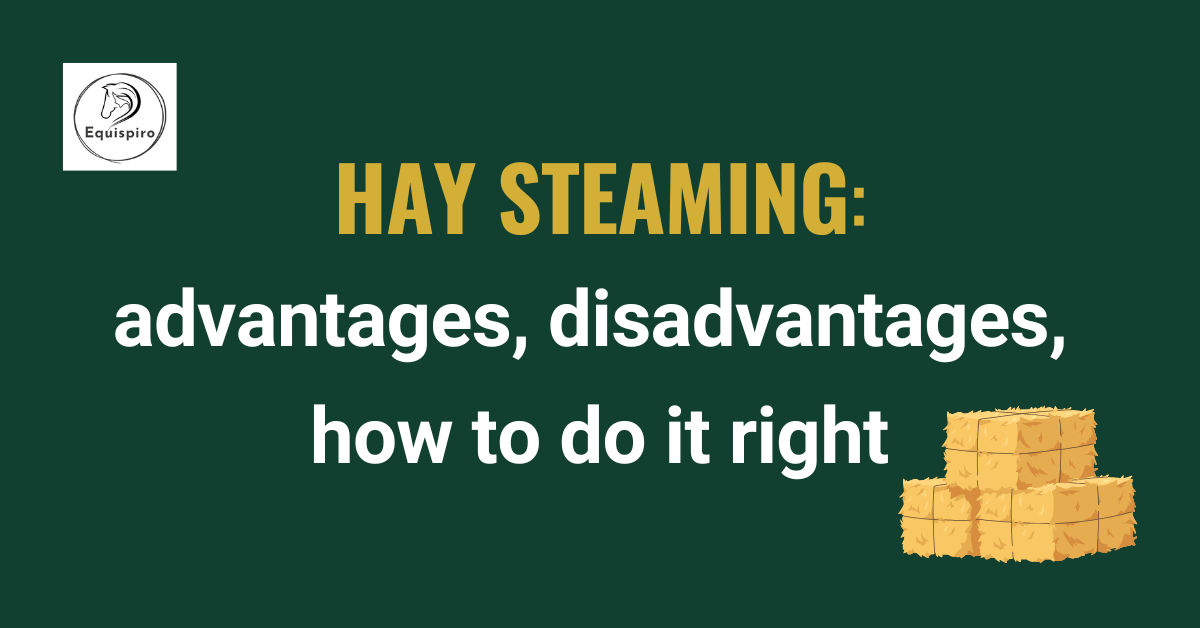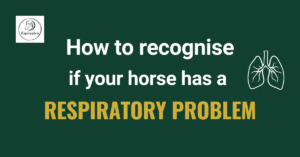For many horse owners, hay is more than just feed — it’s the foundation of a horse’s health. But what if your hay contains dust, mould spores or allergens that are invisible to the eye? This is where hay vapourisation comes into play.
I have been using a Haygain hay steamer for over ten years and I can say with a clear conscience that it has been one of the best investments for me and my horse. We’ve taken it with us everywhere — from training camp to competition. Here I explain why that is, what you need to look out for and what I’ve learnt the hard way.
What is hay steaming?
Steaming hay uses moist heat (about 100°C/212°F) to sanitise the hay and reduce dust:
- Dust
- Mould spores
- Bacteria and allergens
To be effective, the hay must be exposed to a temperature above 90°C for at least 10 minutes throughout the bale. This ensures that harmful microorganisms and allergens are killed not only on the surface but also deep inside the hay.
In contrast to soaking the hay (which can cause bacteria to multiply), steaming makes the hay hygienic and preserves nutrients. A properly steamed bale smells fresh, sweet and appetising.
Advantages of steaming hay
- Reduces dust – important for horses with allergies or asthma
- Kills mould spores and bacteria – improves respiratory health
- Destroys dust mites and other allergens – thanks to the sustained high temperatures
- Improves palatability – even picky eaters often enjoy steamed hay
- Preserves nutrients – unlike soaking, which can wash them out
- Reduces waste – horses like to eat steamed hay
Possible impairments
- Initial cost – high quality vapour devices such as Haygain can be expensive
- Time and set–up – each cycle takes around 50–60 minutes
- Power dependency – requires a stable power source; Note: Some steamers can overload circuits and trip the circuit breaker. Always check the capacity of the socket.
- Burn risk – steamed hay is very hot, so use gloves or tongs when removing it
- Maintenance – the steam generator must be descaled regularly
- Repairs can be costly, especially for original parts after the warranty has expired
Maintenance tips and warnings
- Descale the steam generator frequently – with vinegar or citric acid
- How often? This depends on the water hardness – the harder the water, the more frequently it needs to be descaled (weekly to monthly)
- If you ignore limescale deposits, the heating element can burn out
- Clean the hay container regularly – warm, humid conditions can promote mould growth
- Always check the water level before starting a cycle
Tip: If your water is hard (e.g. well water), you should use filtered or softened water.
How to choose the right Hay Steamer
Consider:
- Size – how many portions of hay do you need per cycle?
- Portability – are you travelling to shows or clinics?
- Steam distribution – make sure the steam reaches the core of the hay
- Power requirements – normal socket or industrial plug?
- Cleaning and hygiene – can you clean the appliance easily?
- Warranty and support – are spare parts or service available in your area?
Note for DIY or budget models:
If you buy or build a non-commercial steamer, make sure it can reach a temperature of 90–100°C and hold in the hay for 10–15 minutes. Otherwise, the hay may not be safe, even if it looks steamed.
Popular brands and price ranges
| Brand | Model/Notes | Capacity | Approx. Price (EUR) |
| Haygain | HG One (1 horse) | 1 haynet | ~1,000–1,200 € |
| Nuveq | Compact steamers | 1–2 haynets | ~800–1,100 € |
| Simply Steam | UK-made steamer for small yards | 1 haynet | ~700–1,000 € |
| Horse Stop | French brand, suitable for small barns | 1–2 haynets | ~900–1,200 € |
| DIY units | Using wallpaper steamer + insulated box | Custom | ~150–300 € |
Prices vary based on size and number of hay portions per cycle. For larger models (3+ horses), expect significantly higher prices.
My experience with Haygain
For over a decade, Haygain dampened every single net of hay my horse ate. We travelled the country together — and the device came in the trailer every time. It helped me manage his asthma and dust sensitivity, especially in dry summers or dusty riding arenas.
Despite regular descaling, the steam generator started to fail — because of the hard water in the stable. I had to send it to Austria several times for repair, which was both expensive and slow. Eventually I gave up and replaced it with a wallpaper steamer — a surprisingly effective and budget-friendly solution.
Conclusion
Steaming hay is not just a luxury, but a necessity for many horses. Especially if your horse has sensitive airways, steamed hay can mean the difference between struggle and comfort.
It’s an investment of time, money and effort — but in my case, I’d do it again in a heartbeat.



